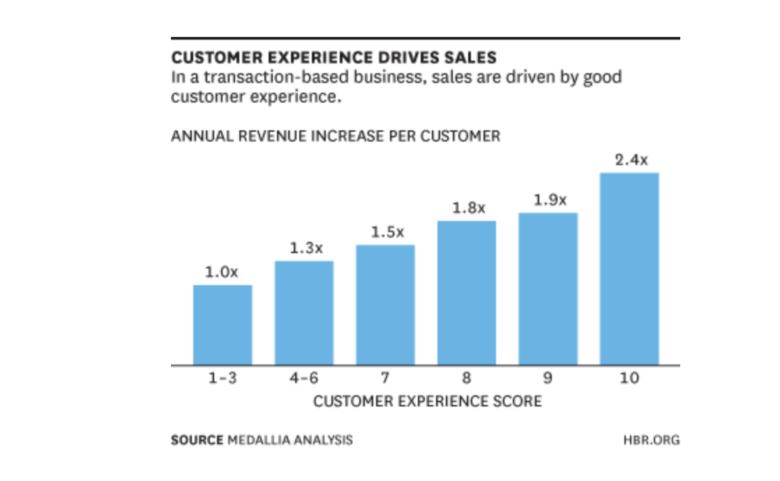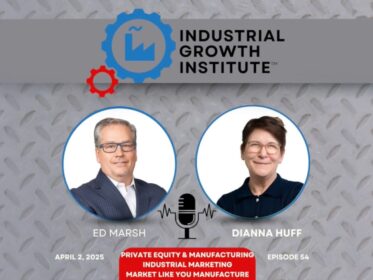
The Daniel Group works with manufacturers, service companies and value-added resellers to measure, manage, and improve customer experience. I’ve known Lynn Daniel for many years. During a catch up call, he shared the data about customer retention and referrals. I immediately knew it would be a good resource for manufacturers — large or small.
This piece by Lynn originally appeared in Manufacturing Marketing, a magazine my designer Rachel Cunliffe and I use to publish. — DH
——-
Over 90% of the referrals our customers receive come from their customers who gave a 9 or 10 on the “likelihood to recommend” survey question. In other words, the most satisfied customers give referrals.
Our company, The Daniel Group, works with B2B industrial companies that provide complex products and services. Our job is to measure, manage, and improve their customer service.
For example, we work with Caterpillar dealers across North America. These dealers provide transactional sales, such as parts and large equipment. They also provide in-the-field equipment repairs.
As transactions take place, The Daniel Group follows up with phone surveys to randomly chosen customers. We want to know how the dealer performed and/or what caused a warranty experience.
All phone calls are recorded and go into our online portal, where our customers can listen to them. If an end-customer says he or she had a problem with a transaction, an email is sent to our customer for immediate follow-up.
How B2B customer surveys differ from B2C
Like everyone, you receive dozens of surveys asking you about your experience. Hotel surveys are pretty straight-forward: How was your stay? Was your room clean? Were you greeted by front desk staff?
For B2B industrial companies, however, transactions are much more complex. A high-end machine tool sale, for example, might include a warranty period. Equipment that costs hundreds of thousands of dollars might include multiple warranty periods as well as annual service plans.
Service-in-the-field for industrial equipment is a whole different experience than taking your vehicle to the dealer.
The technician is outdoors at a construction site and has to diagnose the problem while dealing with the irritated customer (who needed to be up and running two days ago). One misspoken word or wrong tone of voice can quickly escalate into a customer service red-alert.
Referrals begin with the most satisfied customers
As part of our phone survey process, we ask end customers if they’ve referred our clients to others. According to our data, 30 – 40% of people we survey are actively referring.
Referrals come from only those people most satisfied with their experience in doing business with the company. A company might learn they have 25 customers who said they referred within the last six months.
Having this knowledge is absolute gold.
Once a company knows a customer has given a referral, the company can follow up to ask, “Why did you refer us?” One answer we’ve seen frequently is, “Because I can count on you.” The notion of trust plays a very important role when it comes to a positive customer experience – and increasing sales over time.
Quantifying the customer experience
Researchers at the Harvard Business Journal looked at two groups of $1B+ companies with different revenue models – one transactional, the other subscription-based – using two elements common to all industries: customer feedback and future spending by individual customers.

What they learned: Transaction-based customers who had the best past experiences spent 140% more compared to those who had the poorest past experience.
Subscription-based companies are more concerned with customer loyalty. A member with poor customer experiences has a 43% chance of being a member one year later. A member who gives the highest scores, however, is likely to remain a member for another six years.
Generating more referrals for your business
Implementing a customer feedback loop is important, for two reasons. It’s good to hear what customers are saying about your business. Customers often point out systemic problems, of which you, the owner or manager, might not be aware.
And two, it’s good to know who is giving referrals. As stated already, you can ask, “Why did you refer us?” and tap into insight you simply can’t buy. You can also close the loop on sales by learning that a new customer was due to a referral.
You can improve your customer experience even more by thanking customers for their referrals. A phone call or thank you note with a nominal gift card is always appreciated and goes far.
If you do decide to set up your own customer feedback loop, first determine your objectives (the why). More importantly, determine who will own this project. Surveying customers can’t be hit or miss.
For many companies, people don’t pay much attention to referrals or understand the amount of referral activity taking place – and thus can’t capitalize on it.
To increase your referrals, be customer-centric – it’s the lynchpin of all marketing efforts and in fact, can lower marketing costs. It’s simple: keep your customers happy so they’ll tell others about you.
To learn more, visit www.thedanielgroup.com.




